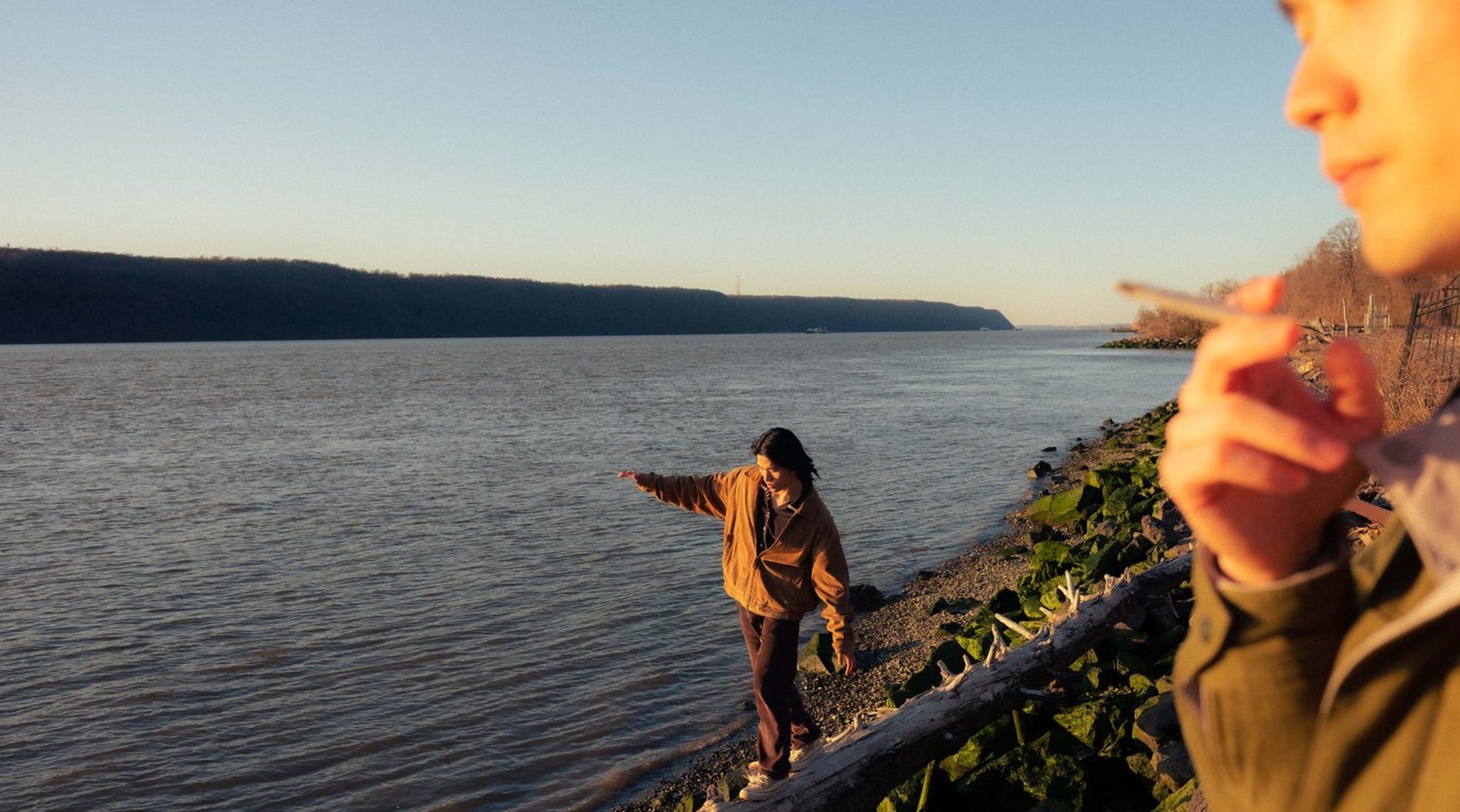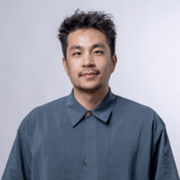In an image from Andrew Kung’s Dreaming on the Hudson four figures lay sprawled out on a blanket, looking out upon a pastoral dreamlike scene, all greens and palest gray blues. The photograph could be a painting; an update on Manet’s Dejeuner sur l’Herbe. Yet rather than acknowledge the viewer, these modern figures are focused on the horizon, deeply ensconced in the scene, not needing to pay heed to outside eyes. Manet’s painting broke the conventions of the time—nude women were not seen in these settings, amidst nature, alongside men in modern dress, painted for who they were.

In Kung’s images another type of convention is broken, the subjects are unexpected, staking their claim on the landscape. He photographs young Asian American men in the natural world, using the environment—specifically the Hudson River Valley—as a vehicle of escape and rebellion against narrow American imaginations of masculinity and belonging.
Images have an indelible hold on people—be they still or in motion. They can build a story that is hard to shake. They can form a narrative that takes hold, a narrative that is taken as truth. The images built around the story of America—of self-made success, white picket fences, Rosie the Riveter, Manifest Destiny, cowboys, and patriots—are no exception. But what happens when an image surprises and pushes back against larger narratives? Who doesn’t have a memory of seeing something that in a sense made them see anew?

Sometimes to see oneself, one has to move, to place oneself in a new space, a different context. When Andrew Kung found himself photographing a Chinese community on the Mississippi Delta, he found an entirely new inspiration for his work. “That project opened up my eyes to these larger themes of identity, race, and belonging,” he recalls. “In Mississippi, with such a small Chinese community, you are forced to reckon with what it means to be Asian American. Coming from the Bay Area, where there were a lot of Asian Americans, I took that element of myself for granted. I became more excited and curious about my own identity. It led me on an investigative journey and sent me into a spiral of more personal work.”

That journey first led to The All-American—an examination of American depictions of masculinity and specifically the desexualization of Asian American men in the media. These depictions can be traced back to racist responses to the perceived threat of early Chinese laborers in the 19th century—a toxic brew of racism, xenophobia, and macho masculinity. Mainstream media has only recently begun to cast Asian American in larger, complex, varied roles. Rather than a simple response—a one-dimensional ‘manly’ man—Kung chose to explore masculinity in all of its complexity, through gender, sexuality, identity, fluidity. The portraits are intimate, brash, and beautiful, often focusing on interiors as a reflection of the spaces individuals build around themselves.

In Dreaming on the Hudson, Kung has moved outdoors, into open spaces. His subjects are free, relaxed, some in motion, some at rest, against the backdrop of the Hudson River Valley—a setting most famously depicted in the Hudson River School’s romantic allegorical landscape paintings of the 19th century. In populating these storied landscapes with youth who would never have been depicted in the past, he hopes the viewer might ask why they haven’t seen images like this before. He hopes the viewer walks away with more questions—a spark of critical reflection about belonging.

In his images, Kung imagines scenes that were missing from those paintings. His subjects, playing, daydreaming, lingering, zoning out, are Asian American. They are immersed in this most American of landscapes because they are just that; American youth. This might seem like a non-issue until one thinks back to the archetypal image of America—the descriptions of the landscape, of youth, escape, and rebellion—the overwhelming whiteness of most depictions.
“For this project, it’s similar to The All-American in presenting a complex view but a little bit different. It’s more in the context of the land, the natural world, and how invisible the contributions of Asian Americans were in agriculture and of the land. There is a lack of depictions of Asian Americans or Asian American men as just as much a part of the natural world as any other group,” Kung explains.

In what might be his most emblematic image, dusk falls across a river scene, softening the low mountains of the Hudson region in the background. Scattered across the space are figures engaged in activities that point to summer—as if Brueghel ditched his Flemish villages for a slice of upstate New York. A pair cast a fishing line into the river, someone shimmies up a flagpole, a youth gazes out into the scene, and a central figure lights up, the warmth of the flame inviting the viewer in on a secret. Throughout Kung’s photographs, one might be mistaken for thinking they were film stills from the 80s, extolling the virtues of a youthful summer, tinged with nostalgia, right on the cusp of the season changing. It feels, in its soft edges and mixed tones, as if pulled from a dream.

Dictionary definitions of the verb “to dream (of something)” state that with effort, anything dreamed of can be realized. For Kung, naming his series Dreaming on the Hudson is just that; an act that pushes a dream into a reality. “We’re turning a lot of these dreams, these sketches that I have in my head, into a new visual language of who can exist in this kind of space. And so, I think, these dreams become a reality.” The work of creatives involves exploring possibilities, questioning what we know, and pushing beyond boundaries. In constructing this series, Kung has offered up a new realm of possibility; a dream made real.







